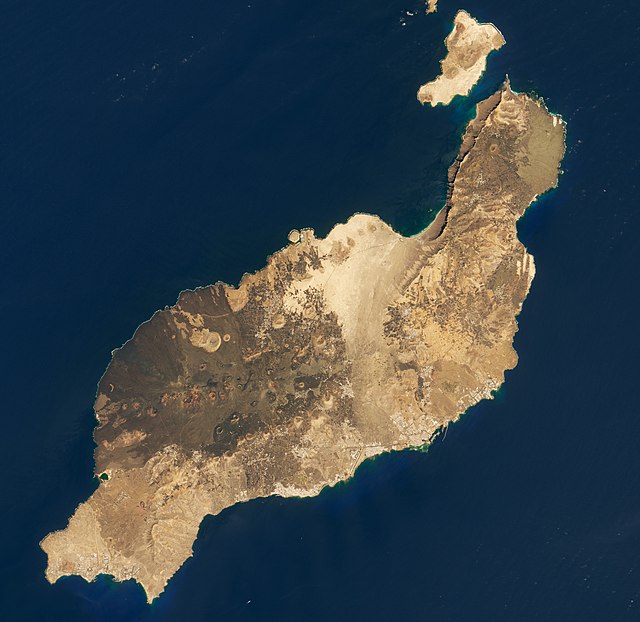Lanzarote is a Spanish island, the easternmost of the Canary Islands in the Atlantic Ocean, 125 kilometres off the north coast of Africa and 1,000 kilometres from the Iberian Peninsula. Covering 845.92 square kilometres, Lanzarote is the fourth-largest of the islands in the archipelago. With 158,798 inhabitants at the start of 2023, it is the third most populous Canary Island, after Tenerife and Gran Canaria. Located in the centre-west of the island is Timanfaya National Park, one of its main attractions. The island was declared a biosphere reserve by UNESCO in 1993. The island's capital is Arrecife, which lies on the eastern coastline. It is the smaller main island of the Province of Las Palmas.
Satellite view (October 2019)
Atlantic Ocean at Los Picollos, Lanzarote
Malvasia grape vines growing in topsoil covered in lapilli, in La Geria. The low, curved walls protect the vines from the constant, drying wind.
Munidopsis polymorpha
The Canary Islands, also known informally as the Canaries, are a Spanish autonomous community and archipelago in Macaronesia in the Atlantic Ocean. At their closest point to the African mainland, they are 100 kilometres west of Morocco and the Western Sahara. They are the southernmost of the autonomous communities of Spain. The islands have a population of 2.2 million people and are the most populous special territory of the European Union.
Barranco de Pecenescal – Fuerteventura
View of Fataga, Gran Canaria
The Chinijo Archipelago, seen from Lanzarote
San Cristóbal de La Laguna in 1880 (Tenerife)








